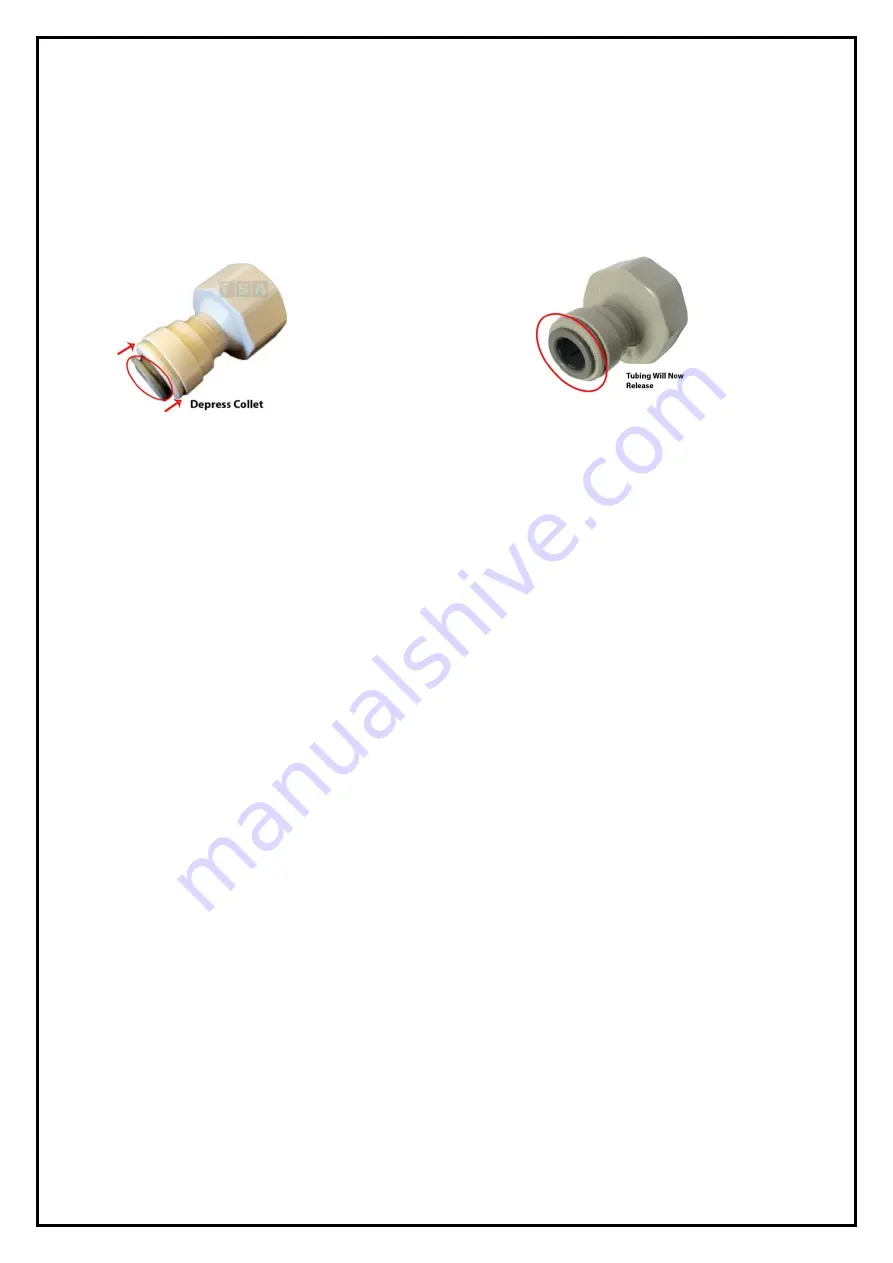
WARNING:
For correct operation of this appliance, it is essential to observe the manufacturer’s instructions.
I. Before You Begin
Quick Connect Fittings: If you come across a push-fit fitting, you need to firmly push the tubing into the
opening until you feel a “click” which signifies that the tubing has pushed through the internal O-ring and is
seated correctly. If leaking occurs, it may be due to roughly cut tubing OR the tubing is not pushed in far
enough. To remove tubing from push-fit fittings, depress the floating collet (shown in below photo), then pull
the tubing out.
NOTE: You will need to remove the Blue/White plug from the end of the outlet line marked
“Drinking Water”. Use the above steps to remove this plug. Do not discard the plug as it is used to
seal the drinking water line between use to prevent bacterial contamination.
II. Important Note:
Laws and regulations prevent us from wet-testing these filtration systems prior to sending them out.
Therefore, during assembly of these systems they are not pressure tested so it is possible to have a small
leak in a connection (which is simply fixed by re-seating the tubing or tightening a fitting). As the filters are
dry packed, the systems will require flushing before first use – Our systems purposely have the inlet filter
disconnected from the membrane so that you can do an initial flush of the pre filters to prevent fouling the
membrane with carbon fines. When first flushing the unit – remember that this tubing is disconnected and
should be aimed into a sink/bucket during the flushing process. When flushing is finished – re-connect the
tubing to the inlet of the membrane housing (Screw Cap End).
Reverse Osmosis Filtration
I. Overview
The Reverse Osmosis Membrane is the workhorse of any RO system. It is constructed from a wrapped
semi-permeable membrane material that uses pressure to separate impurities such as ions, minerals and
other larger molecules from the water, carrying them to waste.
*Reverse Osmosis membranes do not have a litre Capacity for filter replacements due to the variables that
can make the filter life vary significantly. This is mostly due to the water quality. The most accurate way to
test a RO membrane for effectiveness is to use a TDS Meter. TDS meters measure the total dissolved
solids in ppm in the water. To test your membrane, get a baseline reading out of your tap (unfiltered water)
and then compare that to a reading directly off the membrane (disconnect the tube before it goes into the
post filter cartridge). You can expect to get a difference of approx. 90-98% between the readings which
indicate that the membrane is functioning correctly. If this % is beginning to drop below 90% it suggests
that the RO membrane requires replacement
II. Feed Water Conditions
•
Pressure: 50 - 100 psi
•
TDS: <1,000 mg/L
•
Hardness: <250mg/L
•
Iron: <0.02
•
Manganese: <0.01
•
Temperature: 1°C - 26°C















